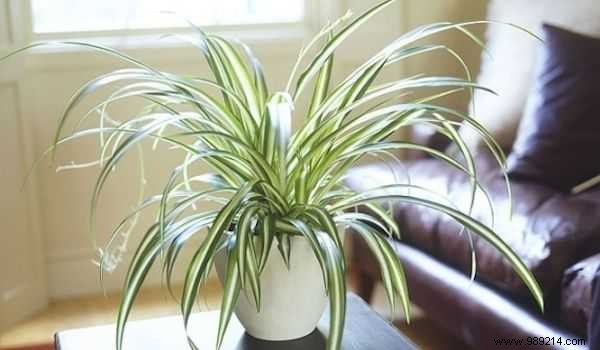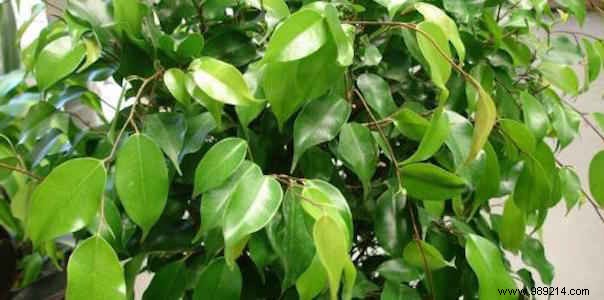
Which is more polluted:indoor air or outside air?
10 times out of 10, the air in your home, office or apartment is more polluted than the air outside.
Indoor air is one of the 5 biggest risks to your health.
Stagnant air in your home causes toxic pollutants to build up and cling everywhere inside.
In addition, most of the furniture in our homes releases toxic chemicals, such as formaldehyde, for example.
You can also be affected by pollutants clinging to pollen, bacteria, mold and other outdoor contaminants that find their way into your home.
Fortunately, there are purifying houseplants that can help us clean up and improve air quality.
And even if you don't have a green thumb, these plants are almost indestructible!
Here is the list of these 9 anti-pollution plants that clean the air:

NASA has found these plants to be amazing air purifiers.
Place chrysanthemums in your home to remove ammonia, benzene, formaldehyde and xylene from the air in your home.
It is a plant that is easy to find in florists and which, in addition, is not expensive.
If you don't know where to find them, you can buy chrysanthemum seeds here.

The spider plant is also one of the so-called "depolluting" plants. It removes formaldehyde, carbon monoxide, toluene, benzene and xylene from the air.
Spider plant is incredibly easy to grow, even for beginners. It resists very well even without regular maintenance. Perfect if you start gardening.
Give it as much light as possible, but no direct sun. If the temperature goes above 20°C, you will do it good by misting its leaves. Water it as soon as the soil dries out.
If you don't know where to find it, you can buy it here.

There are more than 40 different kinds of dracaena. So you have the choice of the plant that suits you best.
The advantage of this green plant is that it removes the following pollutants:benzene, formaldehyde, trichlorethylene, xylene from the air.
The only black spot on the board, the dracaena is toxic to cats and dogs. So if you have animals, it is better to avoid!
Maintenance is very easy here, with weekly watering and no need to prune it.
If you don't know where to find it, you can buy it here.

Ficus are one of my favorites because they can grow quite a lot depending on the pot you use. They have great properties for purifying the air.
Ficus removes benzene, trichlorethylene and formaldehyde from indoor air.
The maintenance is just as simple as that of the previous plants, since it only takes one watering a week and misting its leaves to keep it happy.
If you don't know where to find it, you can buy it here.

Not only does the peace lily make beautiful flowers, but this plant is also almost indestructible.
Also called "spatiphyllum", this plant has flowers all summer long. It prefers shady places with humidity, but avoiding excess water in the pot. Simply allow the surface soil to dry out between waterings.
This beautiful plant is perfect for removing ammonia, benzene, formaldehyde and trichloroethylene from indoor air.

The Boston fern loves cool places with lots of humidity and little light.
Bathrooms are a perfect place for this kind of plant.
This indoor fern is able to remove pollutants like xylene and formaldehyde from indoor air.
For maintenance, water once a week in winter and 2 to 3 times a week in summer. The Boston fern likes water, but not too much.
If you don't know where to find it, you can buy it here.

Mother-in-law's tongues, also called "Sansevière", are everywhere in offices and restaurants. Why ? Because they require virtually no maintenance.
They just need a little water once a week and prefer a dry environment. They don't need a lot of sun either.
But, on the other hand, they are very good at removing pollutants from your home. They are able to remove benzene, formaldehyde, trichlorethylene and xylene from indoor air. Not bad, right?
If you don't know where to find it, you can buy it here.

Indoor palm is very effective at filtering formaldehyde from the air. This plant loves sun and light.
Also called "Chamaedorea", this palm can grow up to 3 meters high. Which makes it an incredible plant when you have it at home.
The Chamaedorea filters benzene, formaldehyde and trichlorethylene from indoor air.
As for maintenance, nothing too bad. The indoor palm prefers good dim light and generous watering during growth without standing water in the saucer.

Aloe vera is a multi-purpose succulent, that's for sure. We are talking here about these 40 incredible uses.
By consuming it in small doses, aloe vera has many health benefits. But that's not all. This plant helps to calm sunburn (very practical on vacation) and also to clean the air inside your home.
With an aloe vera plant in your home, you will be able to effectively remove formaldehyde from indoor air.
As for maintenance, there too it is the foot! As it is a plant that grows in arid, even semi-desert regions, it does not like excess water. Just water it moderately when the soil is dry.
If you don't know where to find it, you can buy it here.